VEAZIE — For nearly four decades, Barbara Wilson could watch from her deck as the waters of the Penobscot River cascaded over the 30-foot dam affectionately dubbed “Grammy’s waterfall” by a grandchild.
The Veazie Dam had stood for a century in this spot just north of Bangor, a mass of concrete extending more than 800 feet across the Penobscot for power generation and for use in the log drives of decades past. So Wilson was concerned – and even a bit dubious – when she began hearing about plans to remove the dam that posed the first obstacle to Atlantic salmon, alewives and other fish attempting to swim upriver.
Today, the Penobscot runs fast and free below Wilson’s hilltop house thanks to an unprecedented, 15-year-long effort to restore New England’s second-largest river system.
“When the dam was here, it was in my backyard,” Wilson said. “I thought I was going to miss my waterfall, but it is hard to remember what it looked like when the dam was here. I think the river is much prettier now.”
The Penobscot is also gradually returning to life – and, in the process, providing a potential model for dammed-up rivers across the nation. For advocates of dam removal, including conservationists and recreational fishing groups, the goal is clear: Restore the health of river ecosystems so that fish populations can flourish again, and provide economic benefits that flow to local communities from healthy fisheries, paddling and other forms of recreation.
“When it is all said and done, it will be the largest river restoration project in the country,” said Susan Wells, the national coordinator for the U.S. Fish and Wildlife Service’s fish passage program. “The important thing about the Penobscot project is that it takes a landscape approach to river restoration.”
Nearly two years after the Veazie Dam’s removal – and three years after deconstruction of the equally large Great Works Dam just upriver – alewives, American shad and other species are returning in numbers not seen in decades, if not generations.
The nearly 590,000 alewives or river herring counted this spring at the Milford fish lift – now the first dam on the Penobscot – is more than triple last year’s run of 187,438 fish and represents a 45-fold increase from the 2013 numbers. Likewise, more than 1,800 American shad have also returned this year, compared to fewer than 20 total in the 30 years before the dams were taken out. Biologists say that for the first time in decades, they are hearing from Bangor-area fishermen trying to figure out the best way to catch shad, the largest type of herring known for its savory meat.
While Atlantic salmon numbers remain well shy of what is needed for a self-sustaining run, the 726 sea-run salmon that have returned so far this year are nearly triple last year’s historic low and are the highest since 2011.
“I think it’s fantastic,” Dan McCaw, a fisheries biologist with the Penobscot Nation’s Department of Natural Resources, said while looking at the ripples and rapids that have replaced the Veazie Dam. For the Penobscot Nation, the project is a step toward restoring a sacred river that has fed its people for thousands of years and remains central to the tribe’s culture and identity.
“Salmon and eels will be the last thing to be restored because they need the headwaters,” McCaw said.
The project is expected to reopen 1,000 miles of watershed to fish once the final stage of the project – a modern fish bypass around Howland Dam – is complete next year.
But fish are hard to see beneath the Penobscot’s dark waters and their economic impact difficult to quantify so soon after the dams’ removal. River users are perhaps an easier gauge. And they, too, are rediscovering the stretch of the Penobscot between Old Town and Bangor.
More than 100 canoeists, kayakers and paddle-boarders tested their skills against one another and the river in late July during the Penobscot River Whitewater National Regatta held by the American Canoe Association and hosted by the Penobscot Nation. The association has already agreed to bring the four-day national championships back to the Penobscot in 2016 and 2017.
“We had a large number of people come to our community who hadn’t been here before or who were coming back, so that was nice,” said Mark Leonard, Veazie’s town manager.
FREEING THE FISH
Few people could have imagined 20 years ago a natural flowing Penobscot River south of Old Town. The first dam was built in Veazie at what was known as the “Eddington Bend” in the river in 1834. By the time the complicated, multi-party river restoration plan was signed 170 years later, ocean-dwelling fish attempting to swim up the main stem of the Penobscot to spawn in the upper watershed faced dams in Veazie, Bradley, Old Town/Milford and Howland – plus many more in tributaries.
While most of those structures featured some form of fish passage, biologists and conservationists were insistent that the only way to begin to rebuild the river’s enormous historic fish runs – tens of thousands of salmon, millions of alewives and untold numbers of shad, eels and other fish – was to remove some of the biggest obstacles.
The result was the Lower Penobscot River Settlement Accord, an unprecedented plan to remove two dams and build a fish bypass without reducing the amount of hydroelectric power generated on the Penobscot. In fact, the owner of the dams at the time, PPL Corp., was not only able to increase total generation through enhancements at other dams within the watershed, but also received legal assurances that the environmental and fish conservation groups involved in the pact would not fight future dam relicensing.
The agreement was such a landmark event that then-Secretary of the Interior Gale Norton attended the signing ceremony in June 2004, calling it “perhaps the most significant step to restore the Atlantic salmon in the past century.” Interior Secretary Ken Salazar then made the trip back to Maine in 2012 to witness the start of demolition of the Great Works Dam.
Parties in the agreement included the Penobscot Indian Nation, the Atlantic Salmon Federation, state and federal agencies, PPL Corp., Trout Unlimited, Maine Audubon, the Natural Resources Council of Maine, American Rivers and The Nature Conservancy. The nonprofit Penobscot River Restoration Trust eventually raised more than $60 million – with about half coming from the federal government – to purchase the three dams from PPL Corp. and implement their ambitious plans.
Although the Veazie Dam was larger, the topography of the river makes the difference even more dramatic at the former Great Works site. Penobscot Indians had dubbed the spot “the bad falls with the bad carry” because of the rapids there. While likely not as treacherous today as it was back then, the revived rapids at the former Great Works site were a major reason the Penobscot was chosen to host this year’s whitewater paddling championships.
Standing on the riverbank in Bradley, Laura Rose Day with the Penobscot River Restoration Trust said it was exciting to see the competitors using the river in July. The project would have been impossible without that “unprecedented collaboration.”
“I really think the project represents people stepping outside of their silos and saying, ‘Let’s pretend for a minute that we can focus on what we all have in common,'” said Day, the trust’s executive director. “If people didn’t do that, we wouldn’t be standing here. We would be swimming.”
To be clear, the Penobscot is far from dam-free. Fish swimming either upstream or downstream – as well as human paddlers – now encounter their first dam in Old Town/Milford, just a few miles upriver from the former Great Works site. But the dam’s current owner, Brookfield Renewable Energy, was required to install an improved fish passage system at the Milford Dam as part of the obligations it inherited through the restoration project.
The last stage of the river restoration project is happening right now at Howland Dam, located roughly 20 miles upriver from Milford, where work on the fish bypass is expected to be completed in time for next spring’s spawning runs.
“That’ll be it,” Day said. “It’s been a long haul, but it is great to see results.”
RESTORATION’S RESULTS
And the river restoration project is producing results.
Maine does not have an American shad restoration program, so the more than 1,800 shad counted at the Milford Dam so far this year were wild-bred and moving back into the upper stretches of the Penobscot on their own. Meanwhile, the 589,503 alewives that passed through the Milford dam – combined with roughly 300,000 fish counted in a stream south of Milford – made the Penobscot the second-largest alewife river in the state behind the Sebasticook.
“We are looking at close to 1 million alewives in the Penobscot – that is a big difference,” said Oliver Cox, a fisheries biologist who heads the Maine Department of Marine Resources’ Division of Sea-Run Fisheries and Habitat. “It’s part of the ecosystem restoration.”
The story of the Atlantic salmon is more complicated.
Salmon were once so plentiful in the Penobscot that old-timers joked you could walk across the river near Bangor on their backs during a spawning run. The Penobscot tribe fished for salmon, eels and other fish for thousands of years. Dams and decades of overfishing decimated salmon stocks in the Penobscot and every other New England river, however. Salmon are now extinct throughout much of their former range on the Eastern Seaboard and are protected as an endangered species throughout Maine.
Today the Penobscot remains the only U.S. river that still has a sizable Atlantic salmon run, although those runs have fallen perilously low in recent years despite a multimillion-dollar hatchery and restocking program.
Just four years ago, in 2011, biologists were elated when more than 3,000 adult salmon returned to the Penobscot in the largest spawning run since 1986. But returns plummeted to slightly above 600 a year later and hit a record-low of just 259 fish last year. That is well below the amount needed for broodstock at the U.S. Fish and Wildlife Service’s hatcheries in Orland and Ellsworth, which have been helping to keep the Penobscot from going the way of other former salmon rivers.
Cox said he was encouraged by the return of more than 720 salmon this year, yet said the biggest impediment to salmon recovery in Maine and elsewhere appears to be high mortality in the oceans.
“When you’re dealing with a species that has a four- or five-year life cycle, it’s going to be awhile before we see a response” to the dam removals, Cox said.
Some dam removal projects in the West have received more attention because of the size of structures. But Wells, who leads the U.S. Fish and Wildlife Service’s national fish passage program, said the 1,000 miles of reopened watershed in the Penobscot is by far the largest restoration effort to date. Others are watching closely what happens on the Penobscot, which she hopes will become a national model.
“The recovery of the river has been fantastic up there,” Wells said. “It’s a great story.”
REMINDERS OF IMPEDIMENTS
Ironically, it took removing two dams to see the extent to which Mainers have interfered with the river over the past two centuries.
Old dams, cribworks and extensive wood or stone structures hidden by the water built up behind the dams were baking in the hot sun one recent September afternoon. Just above the site of the Veazie Dam is a massive cribwork platform running parallel to the riverbank for several hundred yards, an apparent relic of the dams, sluiceways and other infrastructure used by the sawmills that lined this stretch of the Penobscot in the 1800s and early 1900s. Most will be left to deteriorate on their own – with help from the river, of course.
Piles of old water-scoured boards and logs – some looking like they were hand-cut – line the banks of the river as industrial driftwood washed downstream during a recent heavy rain or after a dam release. Walking among the wood refuse, McCaw from the Penobscot Nation’s Department of Natural Resources paused to pick up some of the feather-light boards and speculate about their possible reuse.
“It’s amazing stuff,” McCaw said. “It is quite a connection to Maine’s timber history.”
For the fisheries biologist, the dams’ removal was a “remotivating” event because of the enormous potential for restoring fish stocks that, despite efforts to help them circumnavigate dams, were still facing an uphill fight in the river. The only reminders of the dam left behind is a small jetty of rock and concrete that was part of the dam’s base, but is likely only visible during low water, and a block of brick on the opposite bank.
“Unless you had been here before, it is hard to imagine,” McCaw said of the long-gone dam.
The Penobscot River Restoration Trust removed the former Veazie Dam powerhouse – a large brick structure housing the turbines and other hydroelectric equipment – and is converting the site into a park featuring a parking lot, grassy hills, a hand-carry boat launch and eventually a picnic area overlooking the river. The trust has offered to transfer ownership of the park to the town of Veazie.
Some local residents are already enjoying the site, however, among them Jan Sockbeson of Veazie.
Sockbeson walks the riverbank looking for old glass bottles, collecting water-worn shards she calls “river glass” and driftwood, and cleaning up trash. She also swims in one of the river’s calmer pools and even helped teach her grandson how to swim – somewhat, she adds – in the pool on days when the river water was shallow and calm.
The 51-year-old remembers visiting the dam and powerhouse as a school kid during field trips. Asked if she ever thought the dam would be taken out, she laughed and replied, “No, would you?” And while she hasn’t seen many other locals using the site, she expects that will change once the gates are opened.
“It’s been great,” Sockbeson said. “I’m learning so much about the river as I’ve been coming down here.”
Copy the Story Link
Send questions/comments to the editors.


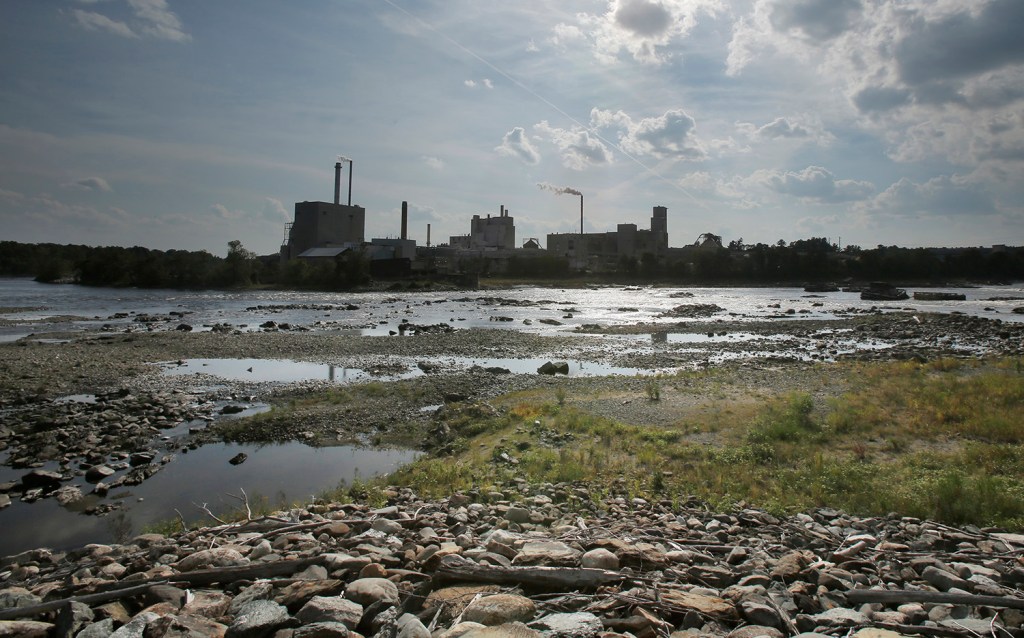
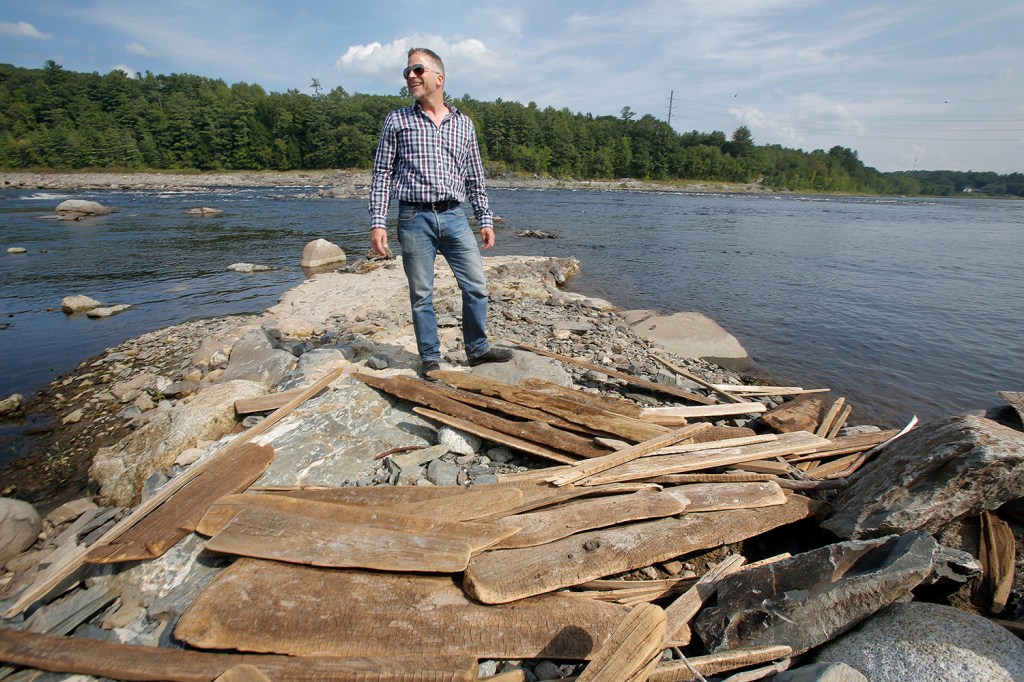
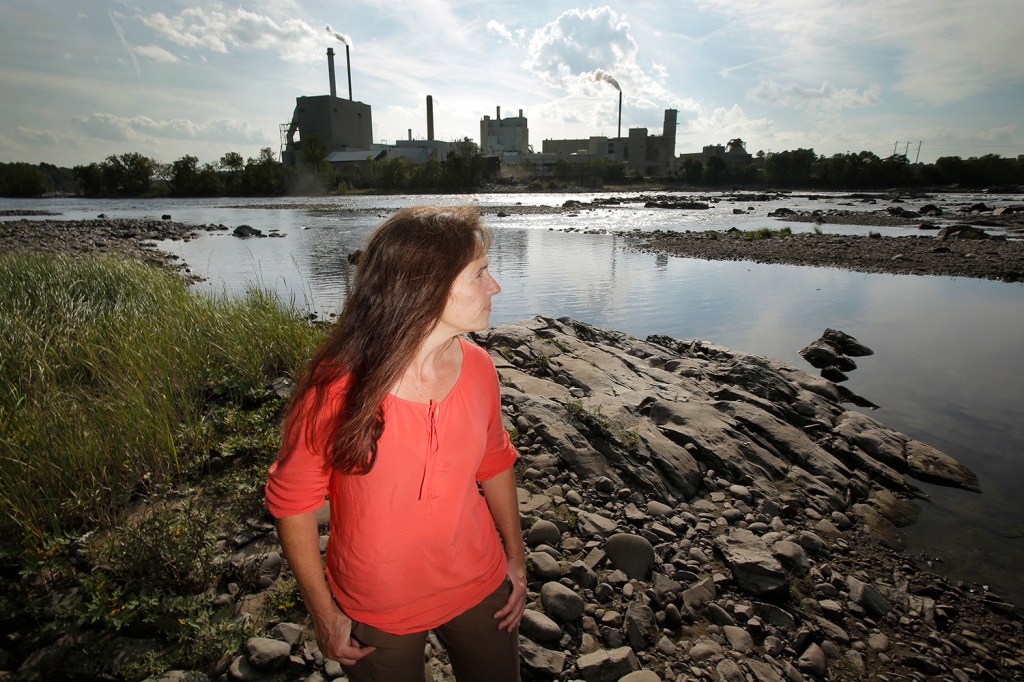
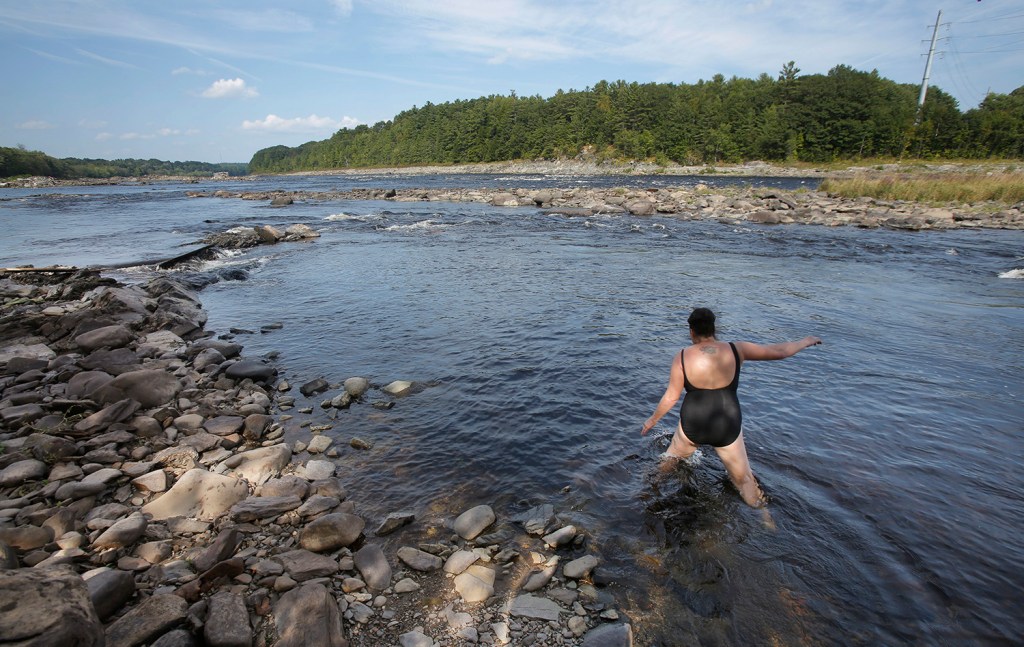
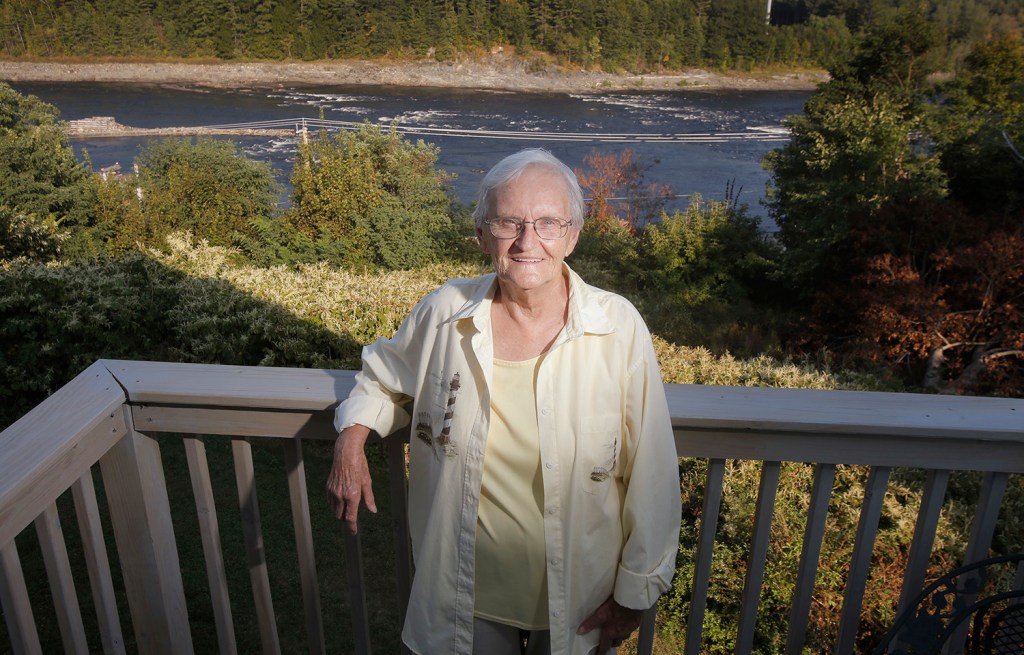
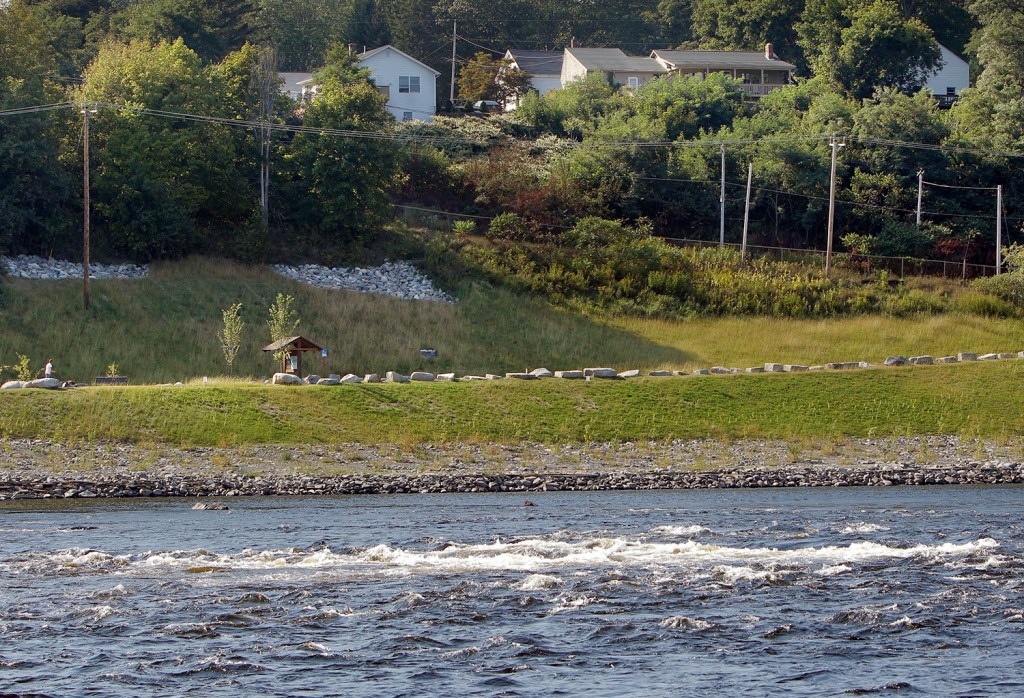
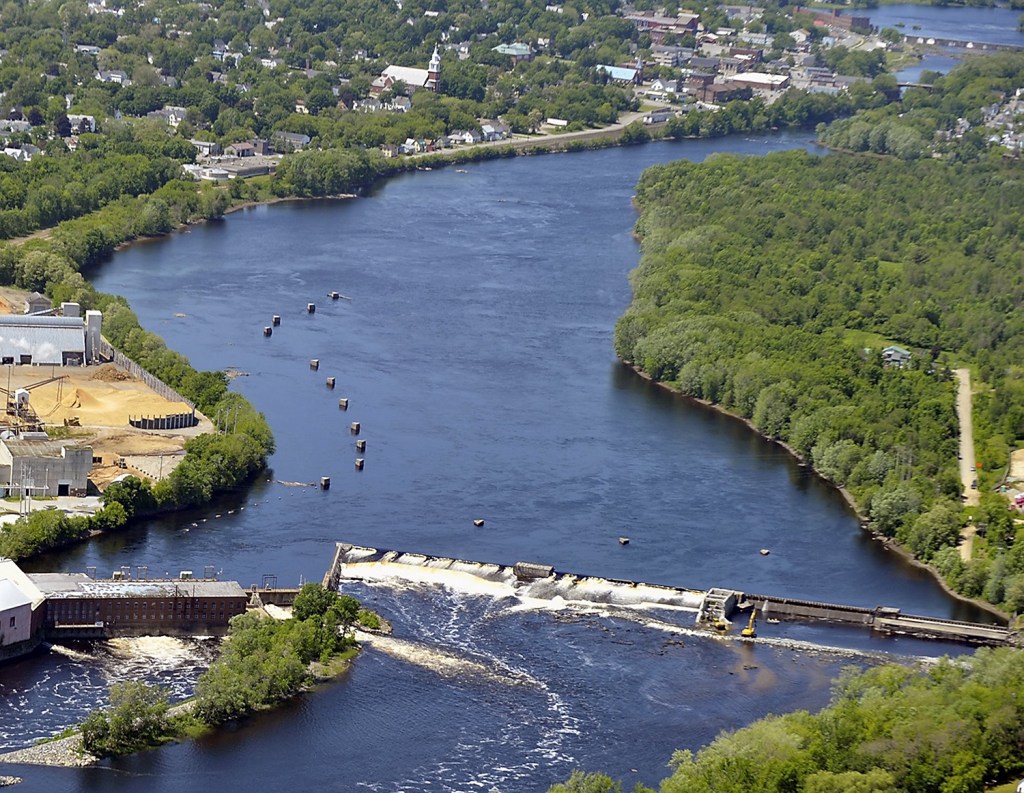
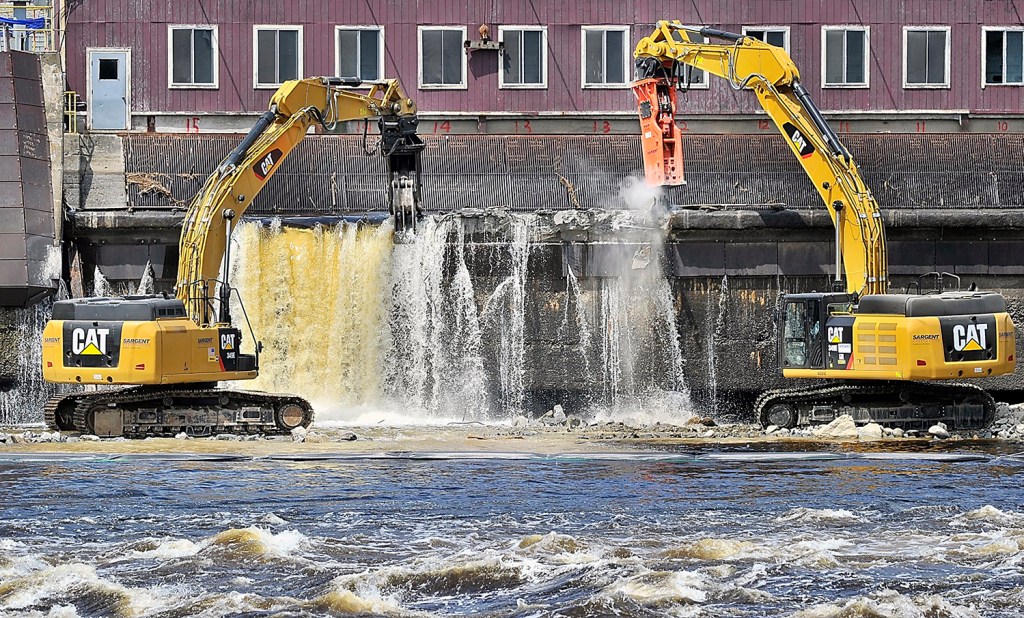
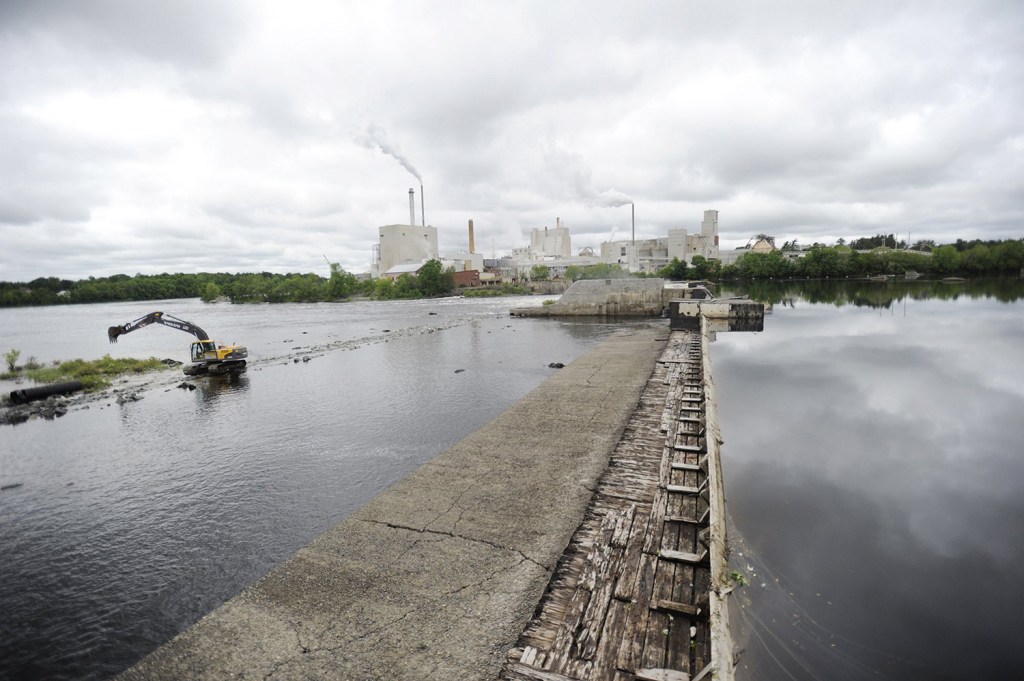
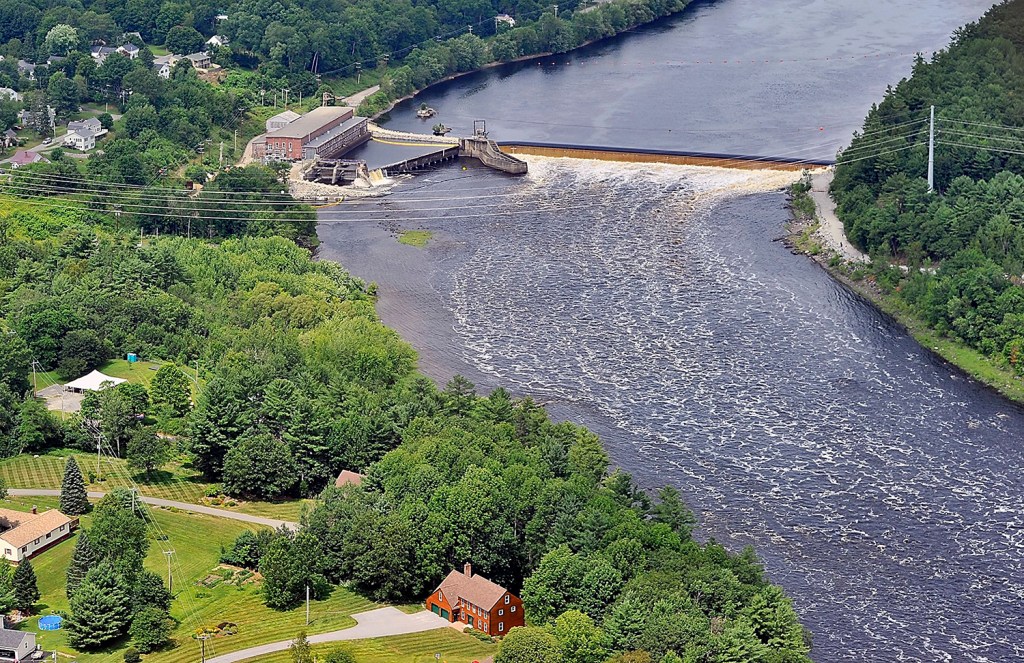

Success. Please wait for the page to reload. If the page does not reload within 5 seconds, please refresh the page.
Enter your email and password to access comments.
Hi, to comment on stories you must . This profile is in addition to your subscription and website login.
Already have a commenting profile? .
Invalid username/password.
Please check your email to confirm and complete your registration.
Only subscribers are eligible to post comments. Please subscribe or login first for digital access. Here’s why.
Use the form below to reset your password. When you've submitted your account email, we will send an email with a reset code.